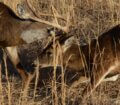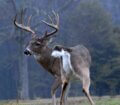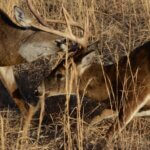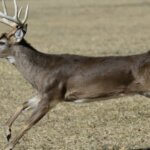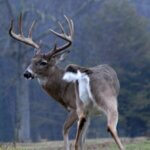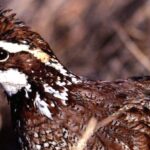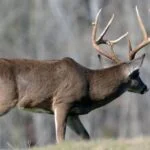Editor’s Note: Bucks fight for several reasons. When you hear antlers clashing, that doesn’t necessarily mean that bucks are fighting to the death. Instead, the bucks only may be pushing each other around. The more you know about buck fights, the better you’ll understand when to go and when to stay when you hear antlers clashing.

Young bucks are like young boys in the first grade who begin to push and shove to set-up who is the toughest one in the class. Oftentimes, once that dominance order is set-up in the youngsters, whoever establishes himself as the toughest one of the bunch will maintain that position until the completion of elementary school.
Dr. Harry Jacobson:
According to Dr. Harry Jacobson, a deer researcher at Mississippi State University, “If a young buck is whipped one time, he’s less likely to challenge again. Probably this influences the psychological part of dominance among bucks as much as actual physical size or antler size does. Once that dominance order is set-up after the bucks come into hard antlers, then the likelihood of sparring and buck fights may tend to decrease slightly. Bucks go through a series of aggressive posturing steps before a conflict occurs. A buck demonstrates dominance primarily through his body language. When he approaches a subordinate animal, he’ll usually give that animal a hard stare. If the animal doesn’t then display the appropriate submissive behavior or posture, the confrontation intensifies to a whole series of displays that can end up in a buck fight.”
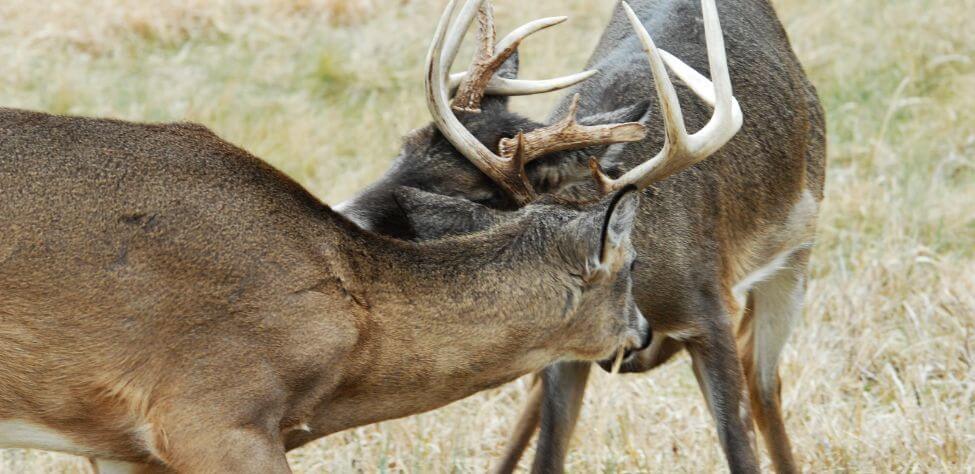
David Nelson:
David Nelson, a state wildlife biologist for Alabama, explains, “When dominance is established, actual fighting may subside. If a buck has been defeated by another buck, the subdominant buck may move on to another place when the dominant buck steps toward him with an aggressive posture.”
The Late Michael Stickney:
Sitckney, a former wildlife biologist in New York, reported, “When the dominant buck demonstrates aggressive behavior, then the challenger has to make a decision of whether to duck his head and prepare for a charge or tuck his tail and prepare to run. Most of the time from what I’ve seen, and what I’ve read, the dominant buck just doesn’t have to fight – unless there’s another deer that’s his equal. Usually, a dominant buck will assume an aggressive posture – lying his ears flat along his neck and walking sideways very stiff-legged with all hairs standing erect – and totally intimidate the other buck.”
Tomorrow: Deer Battles During the Rut

How to Hunt and Take Big Buck Deer on Small Properties
In this book, you’ll hear from 14 hunters who either have gained permission or leased properties as small as six acres to as much as 250 acres, and how they consistently take older-age-class bucks off these little lands.
VERSIONS: AUDIBLE, KINDLE & PRINT

Jim Crumley’s Secrets of Bowhunting Deer
Using a black magic marker and a gray work jumpsuit, Jim Crumley of Buchanan, Virginia, drastically changed the nature and purpose of hunting camouflage when he created the first sportsman’s camouflage – Trebark. Crumley’s love of bowhunting and his desire to be more invisible changed hunting clothing forever.
In this hunting guide, he shares the wisdom that he’s learned throughout his lifetime about how to be a hunter, how to find a deer lease, how to scout for deer, and more.
Special features include how to:
- Have a magic 60 acres to hunt
- Decide the best equipment to use
- Find deer year-round
- Locate land to hunt
- Know the best place to put your tree stand
- Get bucks within bow range
VERSIONS: AUDIBLE, KINDLE & PRINT

How to Hunt Deer Like a Pro
How do you know if the land you hunt has a trophy deer on it? Wildlife manager Bob Zaiglin, of Uvalde, Texas and Jim Crumley, the father of modern-day hunting camouflage, tells you how to find out. GPS can make finding and taking that trophy buck easier. This hunting guide will teach you how to hunt big bucks where no one else can find them, how to call deer, and how to become versatile as a deer hunter, so that if one deer tactic doesn’t work, another one will.
In the chapter, “How to find Bucks at Scrape,” Dr. Keith Causey, retired professor of Wildlife Science at Auburn University, describes the best way to hunt a scrape.
Brad Harrison of Neosho, Missouri, is a nationally-known videographer, professional deer hunter and master at calling deer. Another master is Will Primos of Primos Game Calls. These two experts will tell the best deer calls and when to use them in this book.
And for over 20 years, Bo Pitman, lodge manager of White Oak Plantation, has been studying deer movement patterns. He explains what types of conditions are best for predicting deer movement.
VERSIONS: AUDIBLE, KINDLE & PRINT

Deer hunting and deer hunters are drastically changing each year. To learn new techniques for hunting deer and have more places to hunt, I’ve interviewed some of the best deer hunters in the nation and share their tactics in How to Hunt Deer Like a Pro: Volume II.
In Chapter 10, Jacob Lamar tells you his tactics for consistently taking older-age-class bucks on public lands in several states. Chapter 11, Bob Walker explains how to find places on public lands where you can hunt that 99 percent of the other hunters never have considered hunting. The Bonus Chapter with David Ramey tells you how, where, when and with what equipment to take big Kansas bucks on public lands by hunting in 100-degree weather when others won’t hunt.
Chapter 13, Mark Drury, his family and his guests take mature bucks every season by having more small places to hunt rather than one large property. Drury explains the strategy of having satellite farms to hunt that only may be 50-150 acres each or less. Chapter 15, Pat Reeve, who hunts far-northern states and Canada, says, “I don’t like hunting for mature bucks until the weather is 20 degrees or less.” Chapter 4, Dr. Larry Marchinton says that funnels are the most-reliable stand sites to hunt for big bucks and tells why.
VERSIONS: AUDIBLE & PRINT

